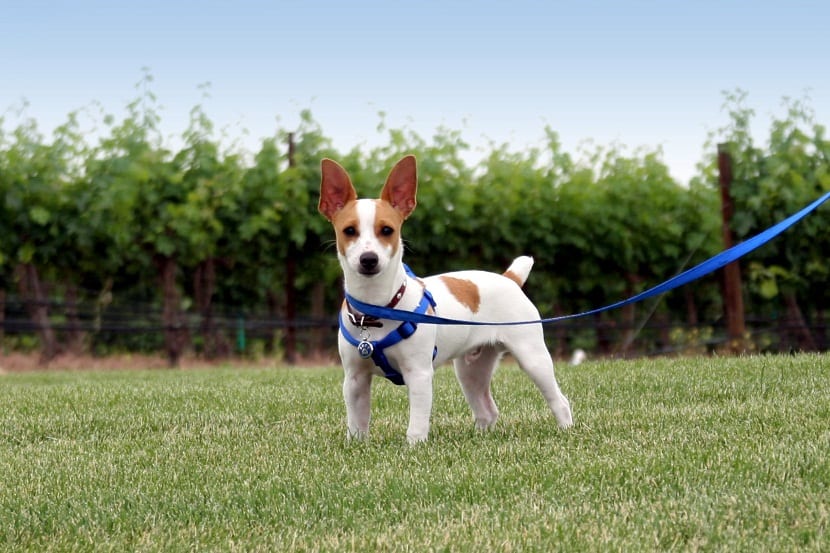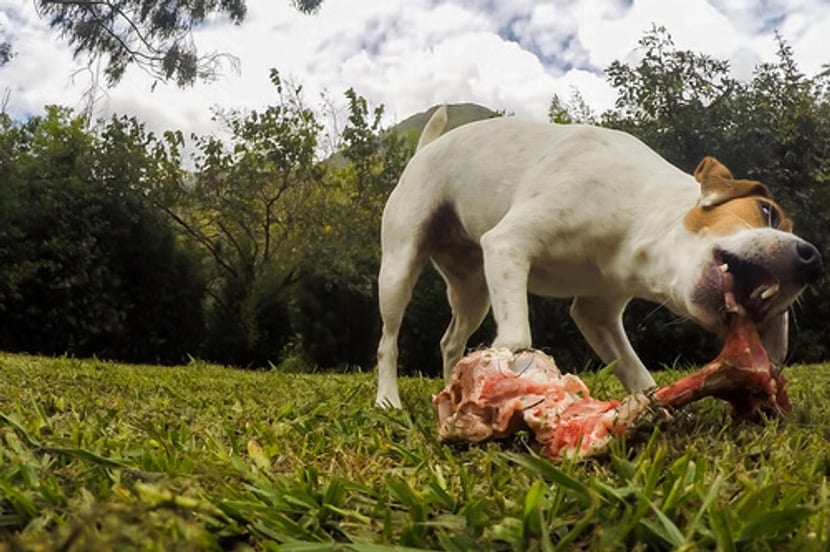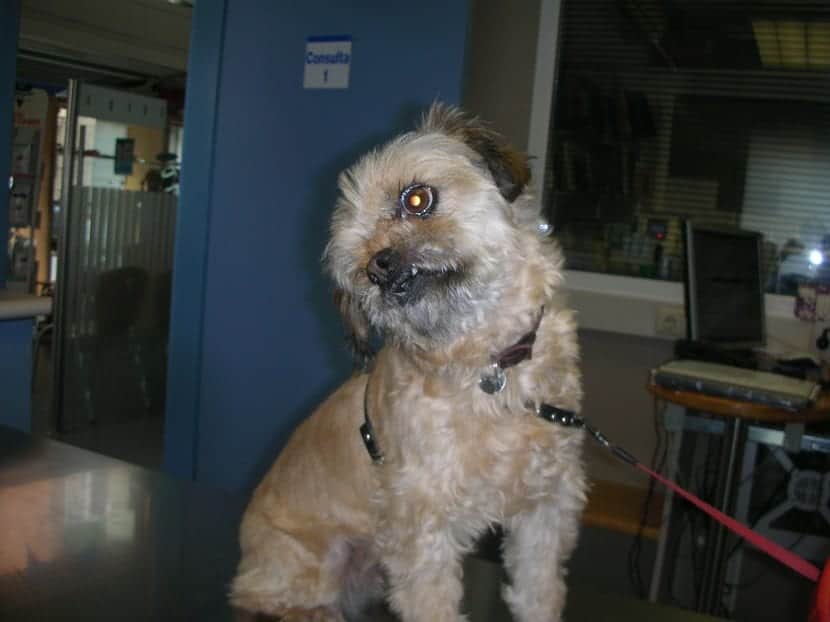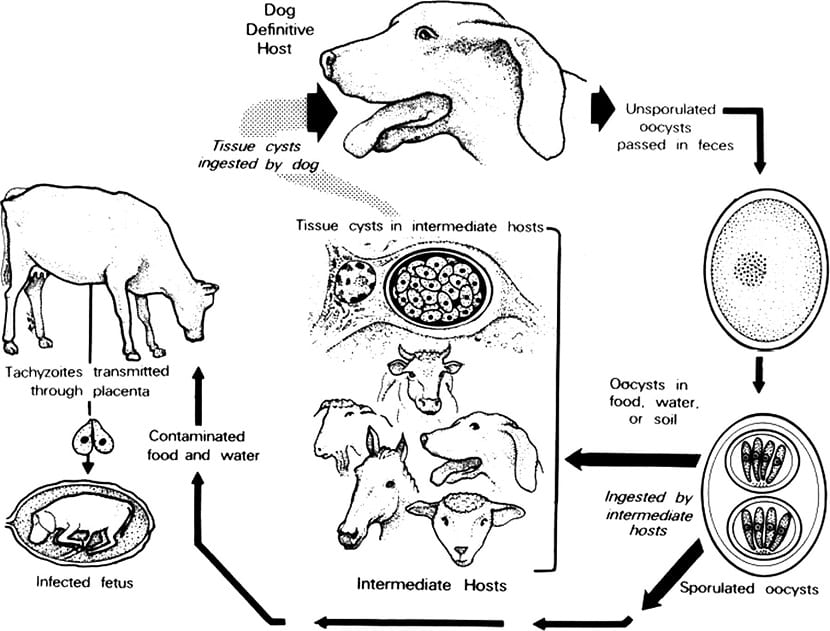
La canine neosporosis It is a disease that can affect dogs and that on many occasions can be confused with toxoplasmosis. Several animal species can be affected by this disease caused by a parasitic protozoan.
Some species of cattle such as bovines are especially prone to contracting it and of course dogs. The age where dogs are most vulnerable is while they are puppies. It is necessary to be alert for any symptoms related to the neuromuscular system of the pet, such as difficulty walking, falling or tripping frequently.
What is canine neosporosis?

Canine neosporosis is a disease caused by the protozoan Neospora caninum. This parasite acts only intracellularly and it is a genus of coccidia that can affect different types of animals. Although it was found for the first time in dogs, it was also diagnosed in cattle, with bovine neosporosis being the main cause of abortion, so it is not an exclusive pathology of dogs.
However, research has now shown that These parasites are found in dogs, coyotes, the dingo, the gray wolf, buffalo, deer, horses and camels. Part of its development cycle requires some hosts such as rodents, birds, ruminants, among others.
Biological cycle
When a dog is infected by canine neosporosis, they eliminate the parasite through their feces, contaminating the grass or water that can later be consumed by cattle or other animals. The cycle causes dogs to become infected by consuming material from livestock, any of the aforementioned intermediate hosts or via the sick mother's placenta.
The dog is the definitive host of the parasite that eliminates the ooscysts in the feces. Some animals function as intermediate hosts and allow the development of the parasite. This occurs because they consume the sporulated ooscysts that usually take about 24 hours to acquire the new shape.
Once the dog consumes meat from an intermediary, it will allow access to the organism that has already become tachyzoites and bradyzoites, which it will eliminate to start a new cycle after five days. While internal parasites will take between seven and 19 days to evolve the disease that is lodged in the nervous tissue and the retina.
Diagnosis, symptoms and transmission
When any change in the mood and routine of the pet is observed, it should be taken to a veterinary consultation in order to rule out diseases that are not presenting more obvious symptoms. This is in order to prevent and be able to make a diagnosis in time that increases the chances that the pet will recover effectively.
If the pet does not present any symptoms, there is a quick and simple test that rules out any risk of having contracted the parasite, which is a blood test that shows alterations in the parameters of liver functions.
El canine neosporosis parasite attacks the tissues of the central nervous system of the animal. This is quite serious and causes symptoms similar to those of canine toxoplasmosis, which is why the diagnoses are sometimes confused since under the microscope the shape of both parasites is quite similar.
The main difference between both protozoan diseases is that neosporosis, shows unequivocal signs of a compromise in the neurological system evidenced through motor and muscular difficulties.
In adult animals the symptoms that have been described are myocarditis, which is an inflammation of the heart muscle, polymyositis or inflammation of the muscle fibers and the skin. Seizures and changes in behavior may also occur as the dog will be sad and lose his appetite. However, the most alarming sign is an accelerated neuromuscular deterioration very evident in the hind limbs of the animal.
So far only three ways of transmitting the disease have been identified since the discovery of the first case in 1984. The first is by ingesting the oosquites directly through food or water contaminated with feces containing the parasite.
Eating contaminated meat from an infected host whose parasite has already lodged in the muscle. By last, is via the infected mother's placenta. It has not been possible to define exactly the details of this transmission but it is a fact that it is possible.
Puppies are the most vulnerable
Puppies were the first to be diagnosed with canine neosporosis. Unfortunately for many hatchlings this parasite caused muscle paralysis and a high rate of early mortality. These pets had a congenital infection that was made because the mother was ill. However, the symptoms in the puppies were strong and accelerated with paralysis of the hind limbs and the jaw.
This brought them difficulties to eat and a progressive deterioration of the immune system that in less numerous cases even presented acute dermatitis. Muscle atrophy is accompanied by heart failure, pneumonia and significant inflammation of the liver. In adult dogs the disease is progressive but not as invasive and violent as in puppies or senile dogs.
Treatment in puppies
So far there is no vaccine against canine neosporosis. However, pharmacological treatment based mainly on special antibiotics for dogs and antiprotozoa is used. The medicines that are most used to counteract the effects of the disease are sulfonamide, pyrimethamine, and clindamycin.
Detected early, it can be cured as long as the pet resists the delicate clinical picture produced by the parasite. Complications can occur at the level of heart, respiratory or liver problems. If the pet's immune system is strong and the parasite has not caused significant damage, the effects can be reversed.
Recommendations

So far it has been proven that the parasite can be transmitted for several generations if the female of any canine breed is infected, it should be avoided that she has offspring. Another important aspect is to control the feeding of the dogs that live in the field.
Those pets with hunting instincts or who are used to eating raw meat are at higher risk of contracting the disease, so it is recommended to educate them to eat only the indicated food and in a single place that would be the container for the food. For this reason, education in dogs is essential to prevent them from acquiring any disease, not just canine neosporosis.
